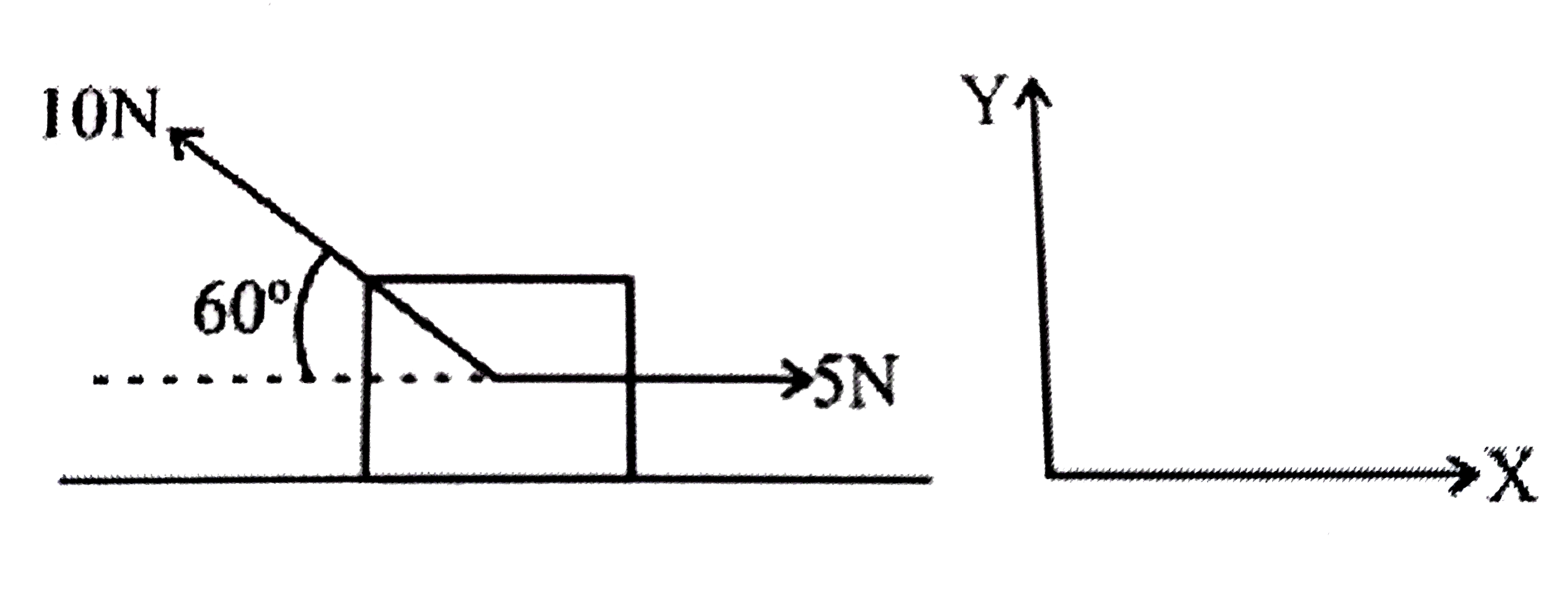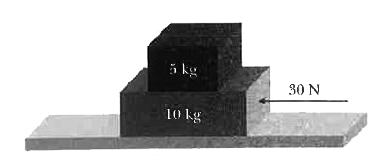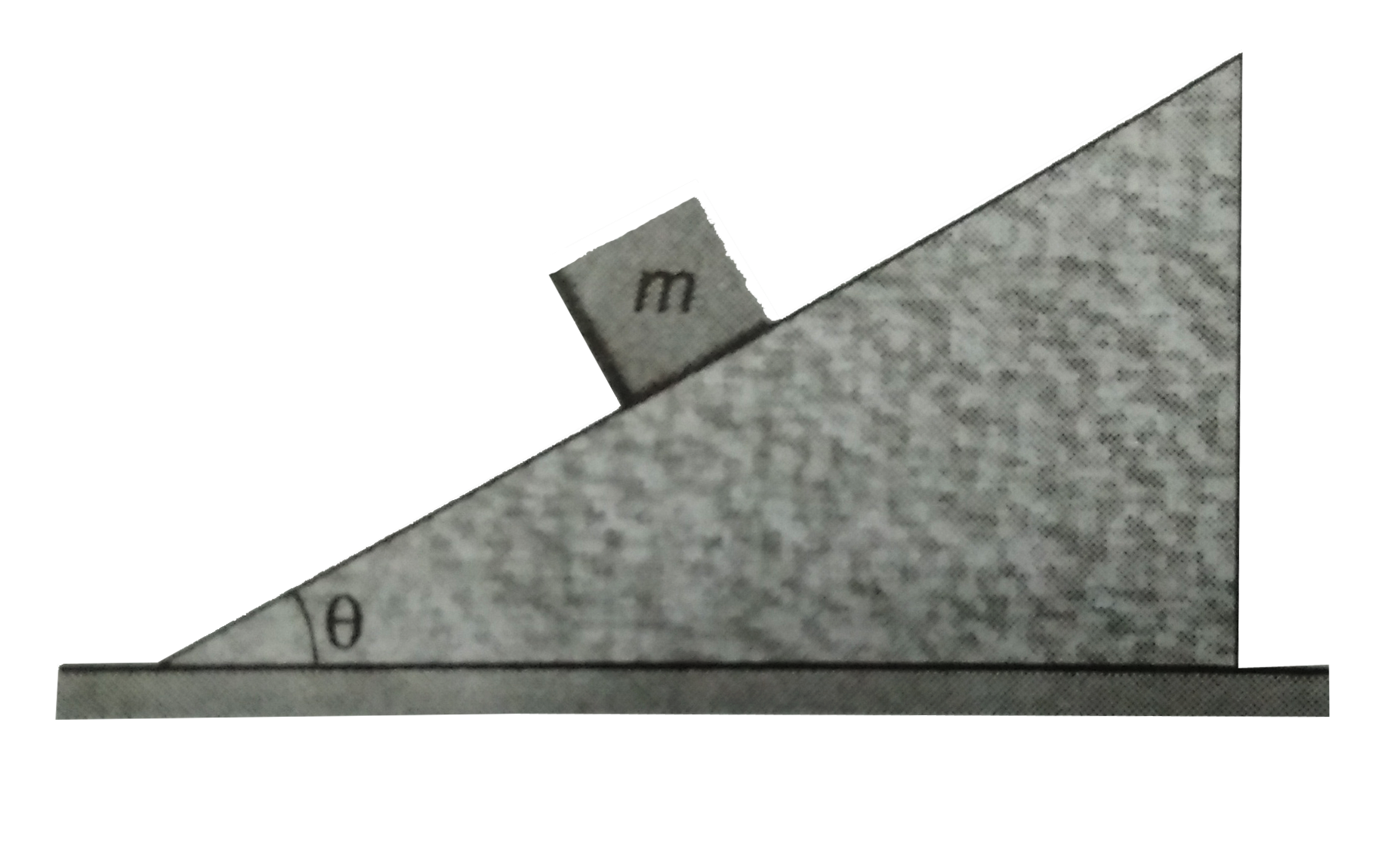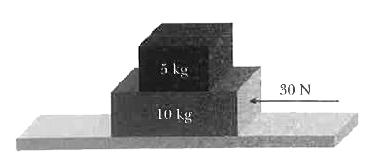A block of mass √3kg rests on a horizontal frictionless surface. What will be the acceleration of the block if it is subjected to two forces as shown in the figure.

Acceleration will be along Y-axis
Acceleration will be along X-axis
Acceleration will be in between X & Y
No acceleration will be there
The correct Answer is:D
Fx=5−10cose=0⇒a=0,andFy<mg
Topper's Solved these Questions
Similar Questions
Knowledge Check
Block A of mass 35 kg is resting on a frictionless floor.
 A0.8ms−2B2.4ms−2C0.4ms−2D4.4ms−2
A0.8ms−2B2.4ms−2C0.4ms−2D4.4ms−2Two blocks rest on a horizontal frictionless surface as shown in the figure. The surface between the top and bottom blocks is roughened so that there is no slipping between the two blocks. A 30-N force is applied to the bottom block as suggested in the figure.
 AWhat is the minimum coefficient of static friction necessary to keep the top block from slipping on the bottom block?B0.05C0.20D0.10
AWhat is the minimum coefficient of static friction necessary to keep the top block from slipping on the bottom block?B0.05C0.20D0.10A block of mass 2 m is pulled along a horizontal frictionless surface by a rope of mass m as shown in the figure given. What force is exerted by the rope on the block ?
 AF3BF2C2F3DF
AF3BF2C2F3DF
A 5 kg block moves in a straight line on a horizontal frictionless surface under the influence of a force that varies with position as shown in the figure. Find the work done by this force as the block moves from the origin to x = 8m.

View SolutionA block of mass m is at rest on a rought wedge as shown in figure. What is the force exerted by the wedge on the block?

View SolutionA horizontal force of 4 N is applied to a block of mass 2 kg resting on a frictionless table. What is the acceleration of the block in ms−2 ?
View SolutionThe acceleration of the 10 kg mass block shown in the figure is : -

View SolutionTwo blocks rest on a horizontal frictionless surface as shown in the figure. The surface between the top and bottom blocks is roughened so that there is no slipping between the two blocks. A 30-N force is applied to the bottom block as suggested in the figure.

What is the magnitude of the force of static friction between the top and bottom blocks?
View Solution

